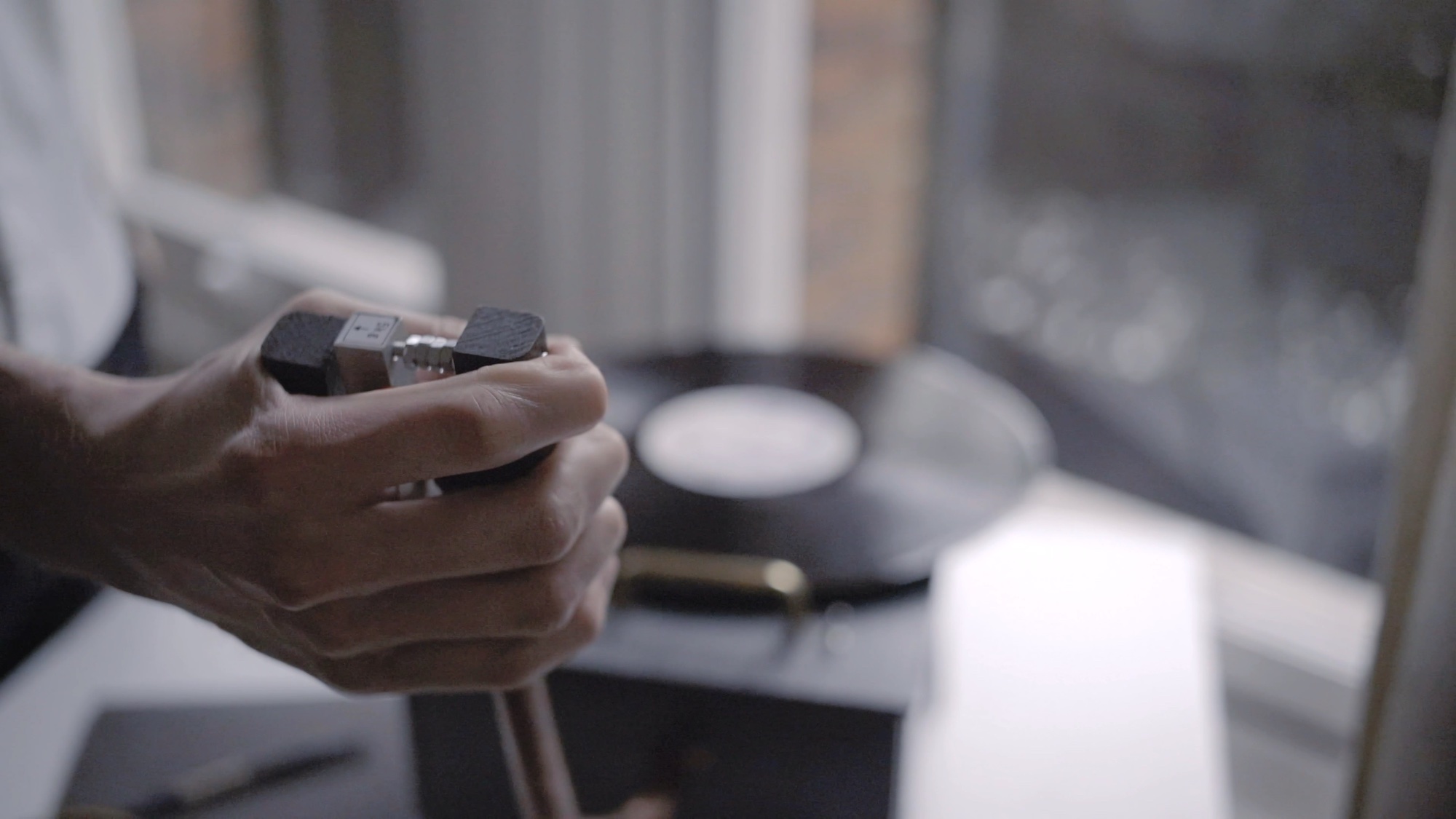"Noise does not judge"
Dissonance by Antton Nuotio
Dissonance is a series of interactive sound installations by Antton Nuotio which reflect on the nature of noise and dissonant sounds. Leather jackets are hung, speared with metal rods, studs and spikes which the audience are invited to touch as they’re enveloped in waves of sound.
Noise does not judge
Dissonance is a series of three interactive audio installations exhibited at Kosminen Gallery, Finland, in November 2020. The exhibition’s objective was to explore how interaction affects the perception of noise and dissonant sounds. In many circumstances, noise is considered interference or an error, which is often actively eliminated. However, noise does not judge or present musical prerequisites. Noise conceals great empowering potential and allows self-expression beyond the limits of conventional musicality. Dissonance examined whether noise could, in a proper context, turn from disturbing to meaningful and show its empowering quality.
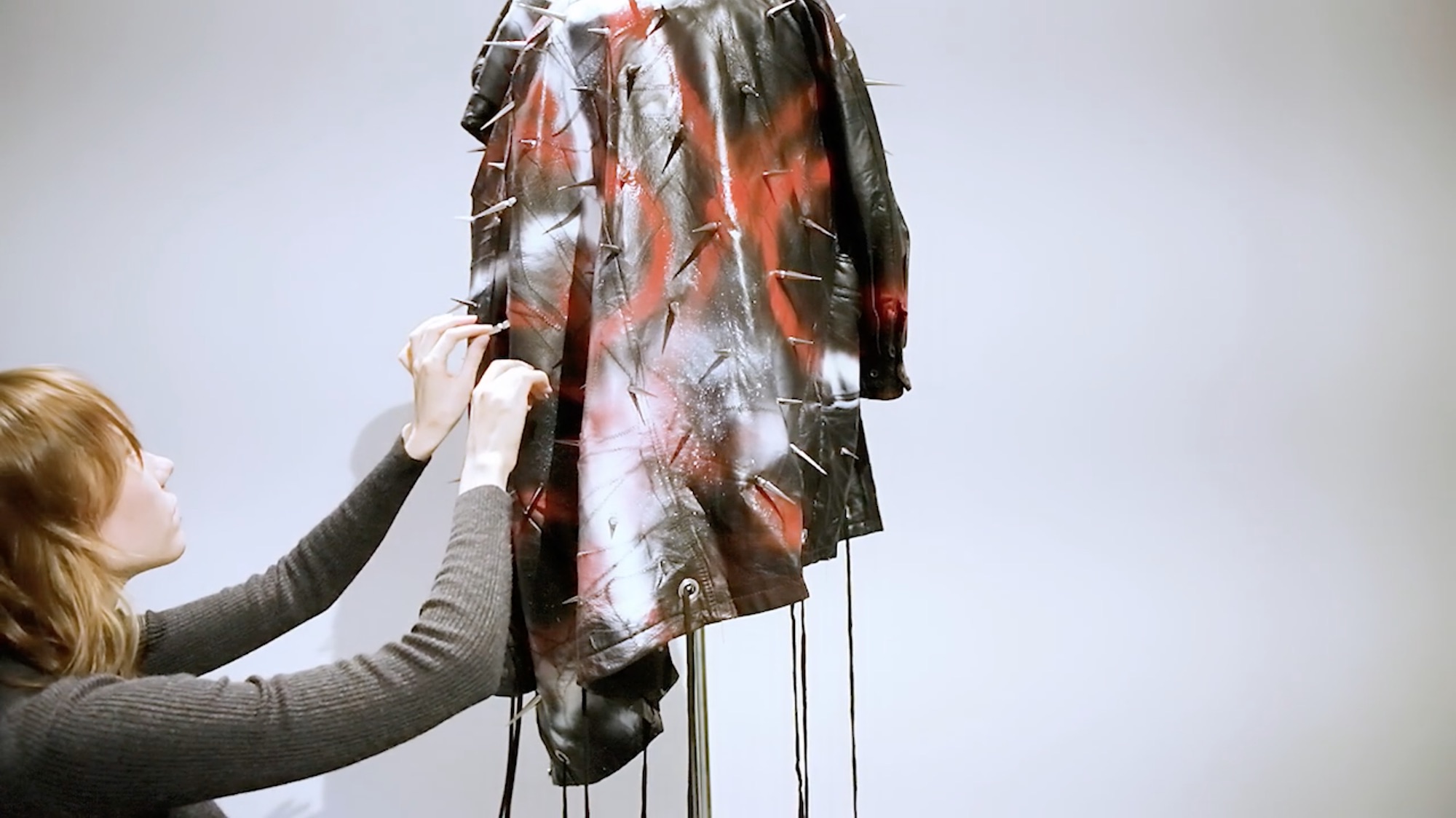
Still from video showing touching the metal studs.
The three installations were made of recycled and deconstructed leather jackets, which were spray painted and decorated with metal spikes and rods. In the first installation, the leather jacket is stretched with metal chains on a sturdy, industrial-looking steel frame.
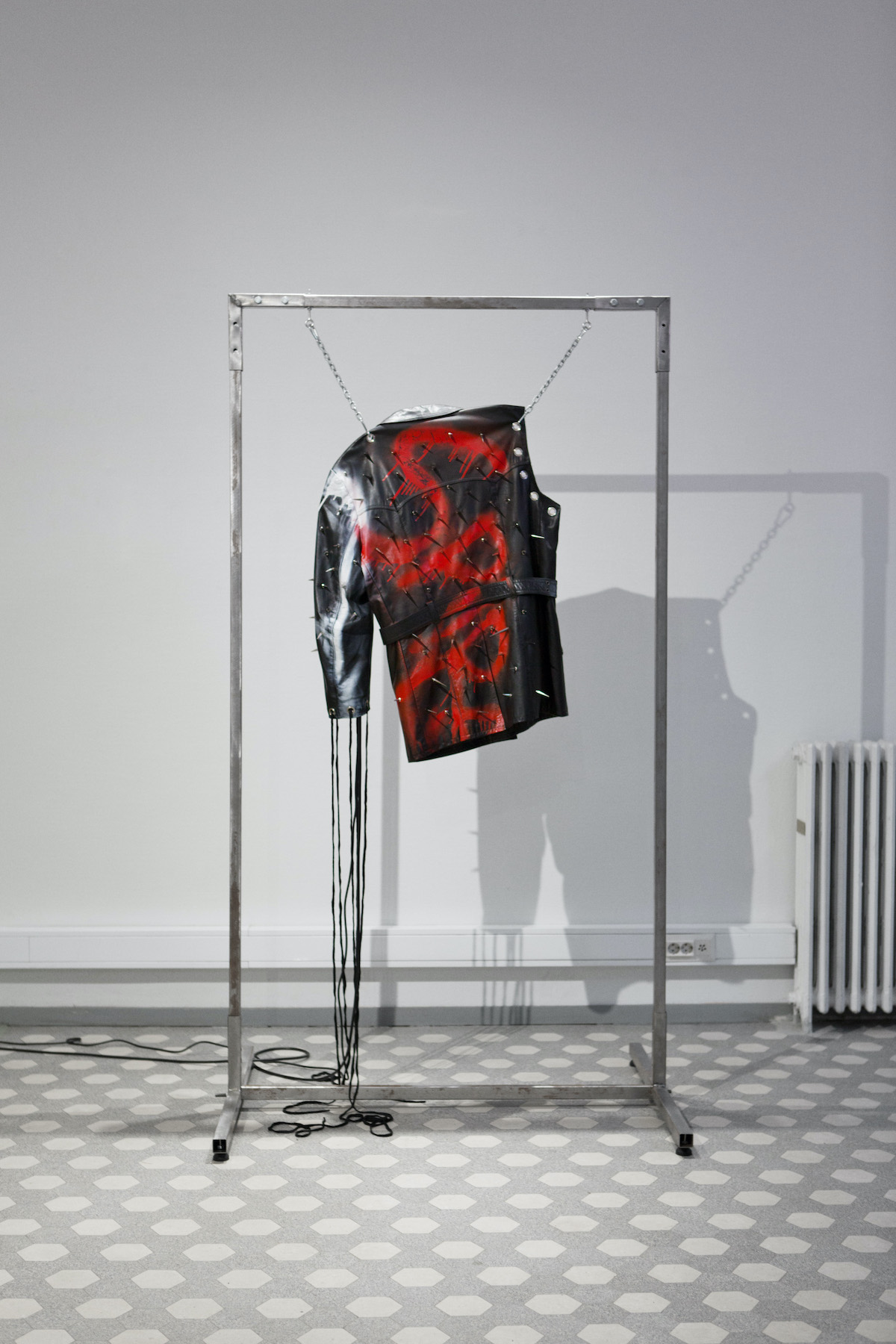
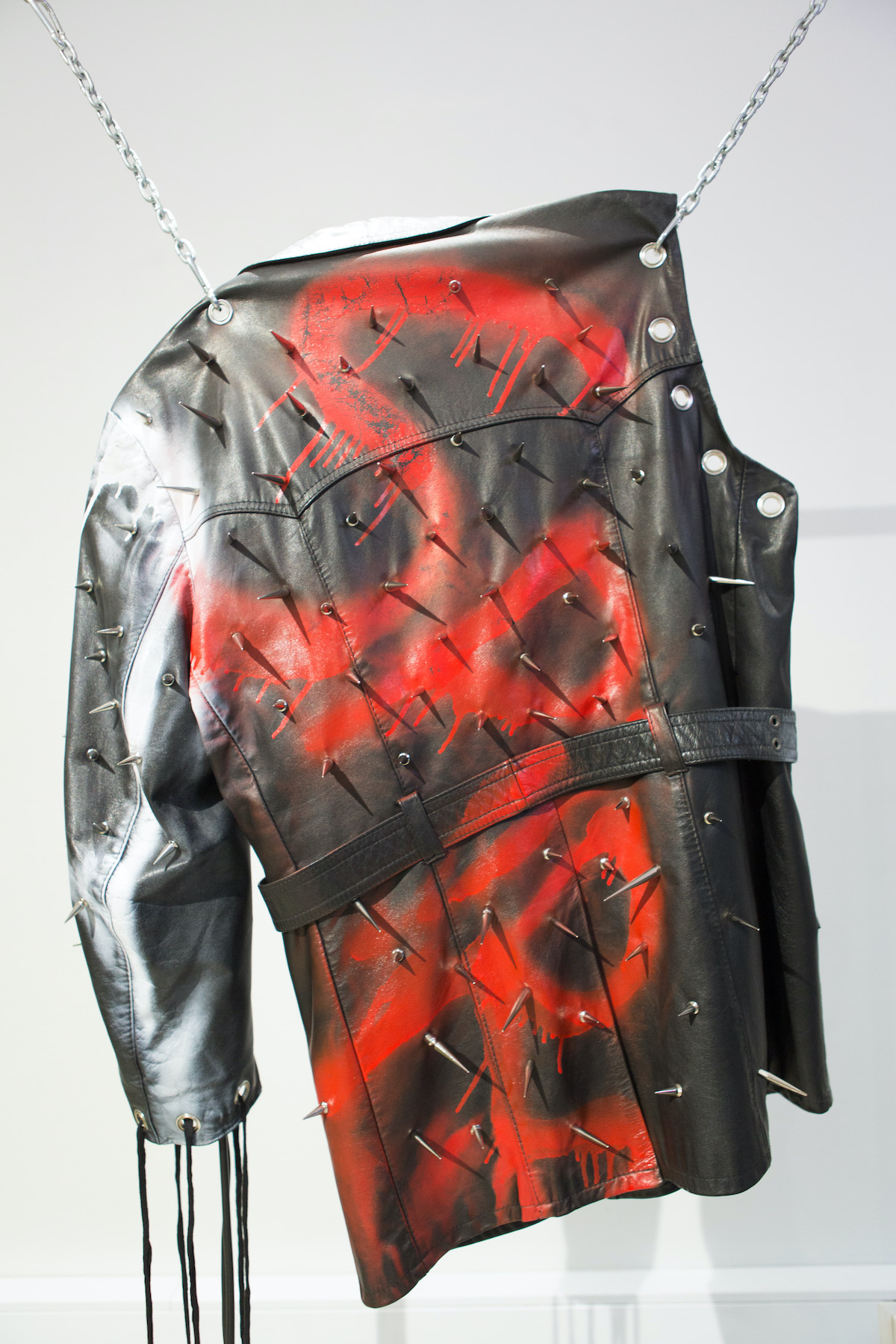
The first installation showing a leather jacket hung on chains, photo by Kosminen
The second installation contains another stud-filled leather jacket, which falls from the top of a two-meter high metal stand.
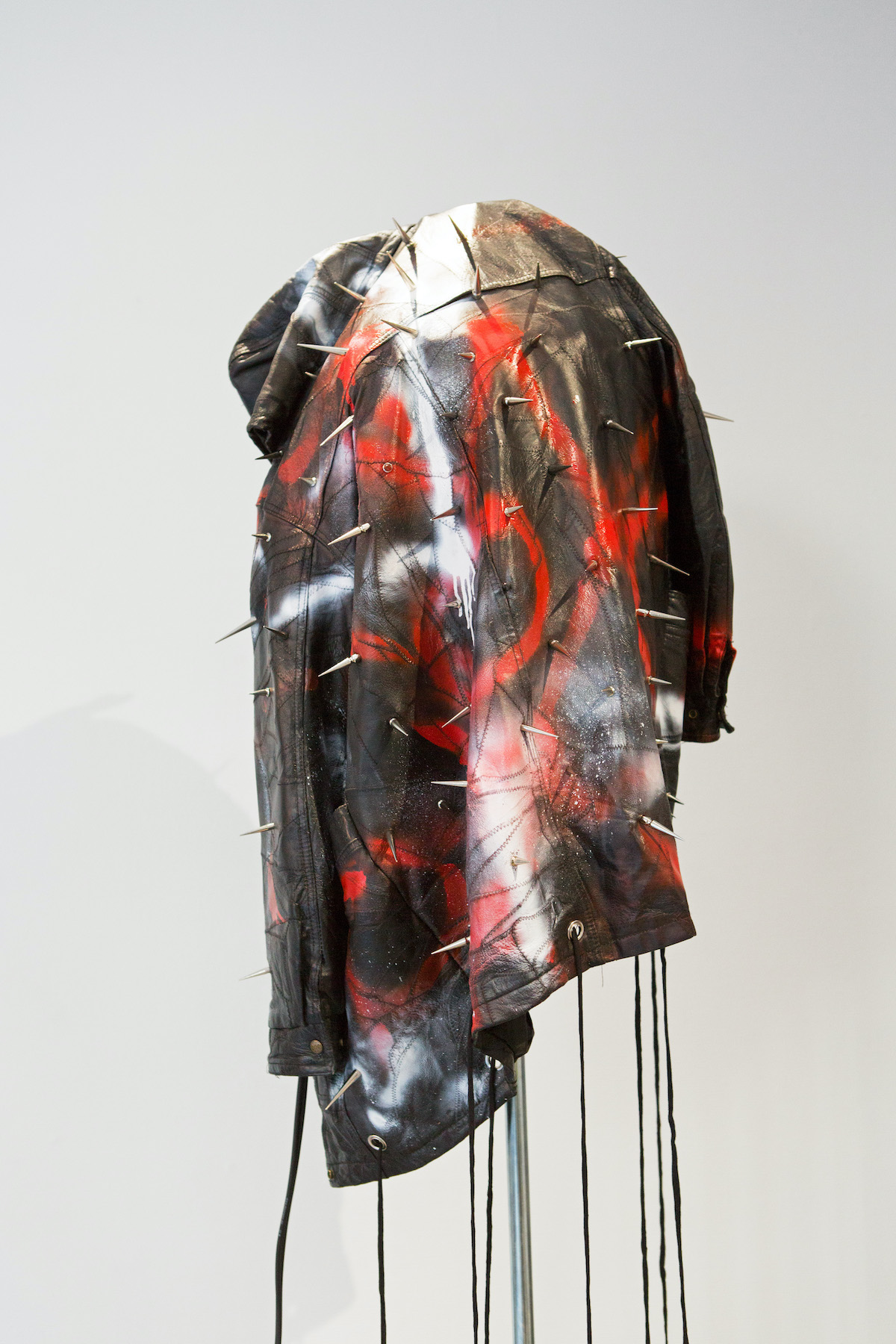
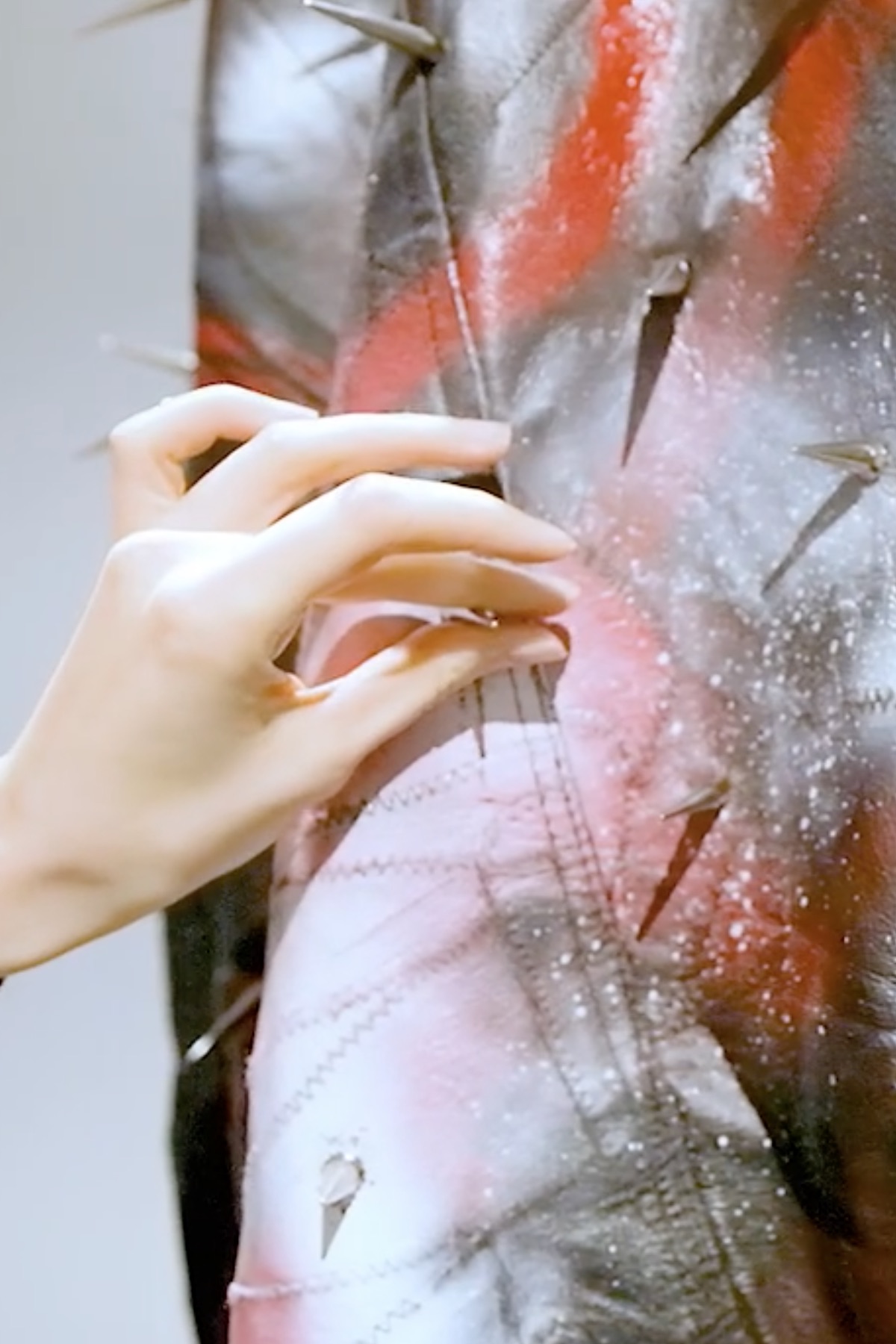
The second installation with studs and a detail of touching, photo by Kosminen
The third installation features leather jackets arrayed as an uneven stack on the floor. Through the stack, twenty-eight one-meter long metal rods impale the jackets.
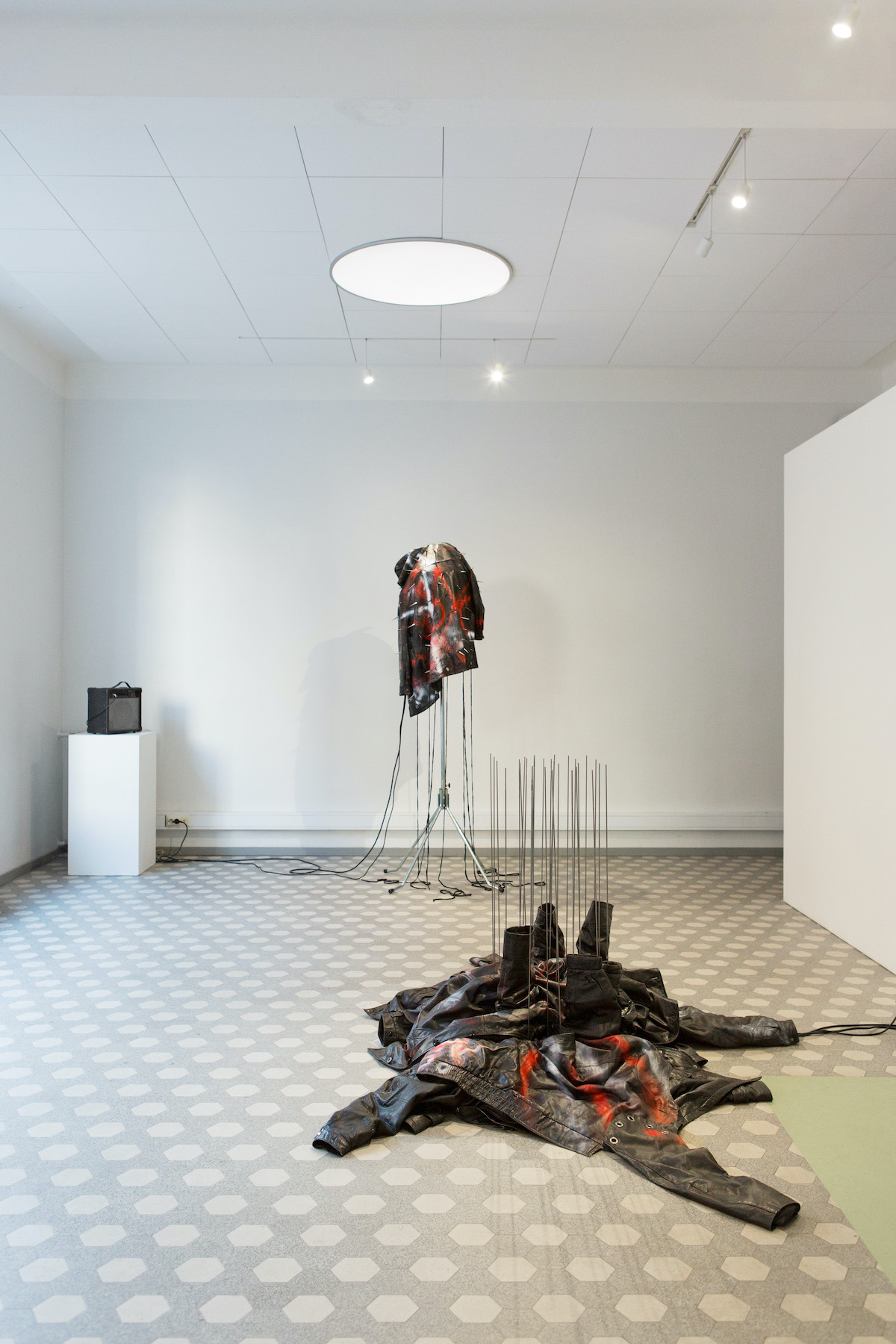
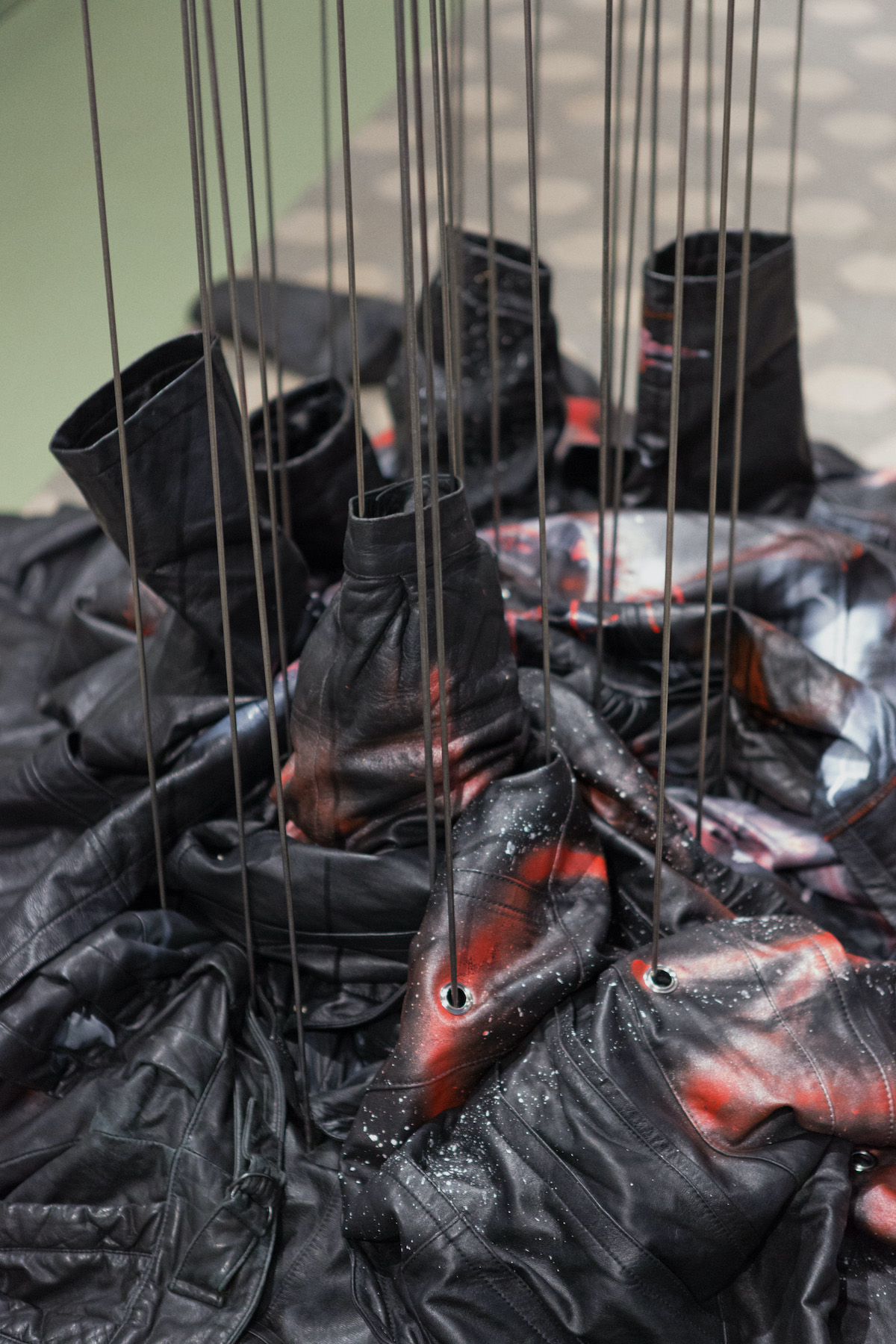
The third installation speared on metal rods, photo by Kosminen
Construction
In all three works, hidden electric hook-up wires run inside the jackets. The wires connect the metal parts to Trill Crafts and Belas, turning the spikes and rods into touchpoints that the participants could use to control the sounds. All the sounds and actions are created with Pure Data patches running on the Belas.
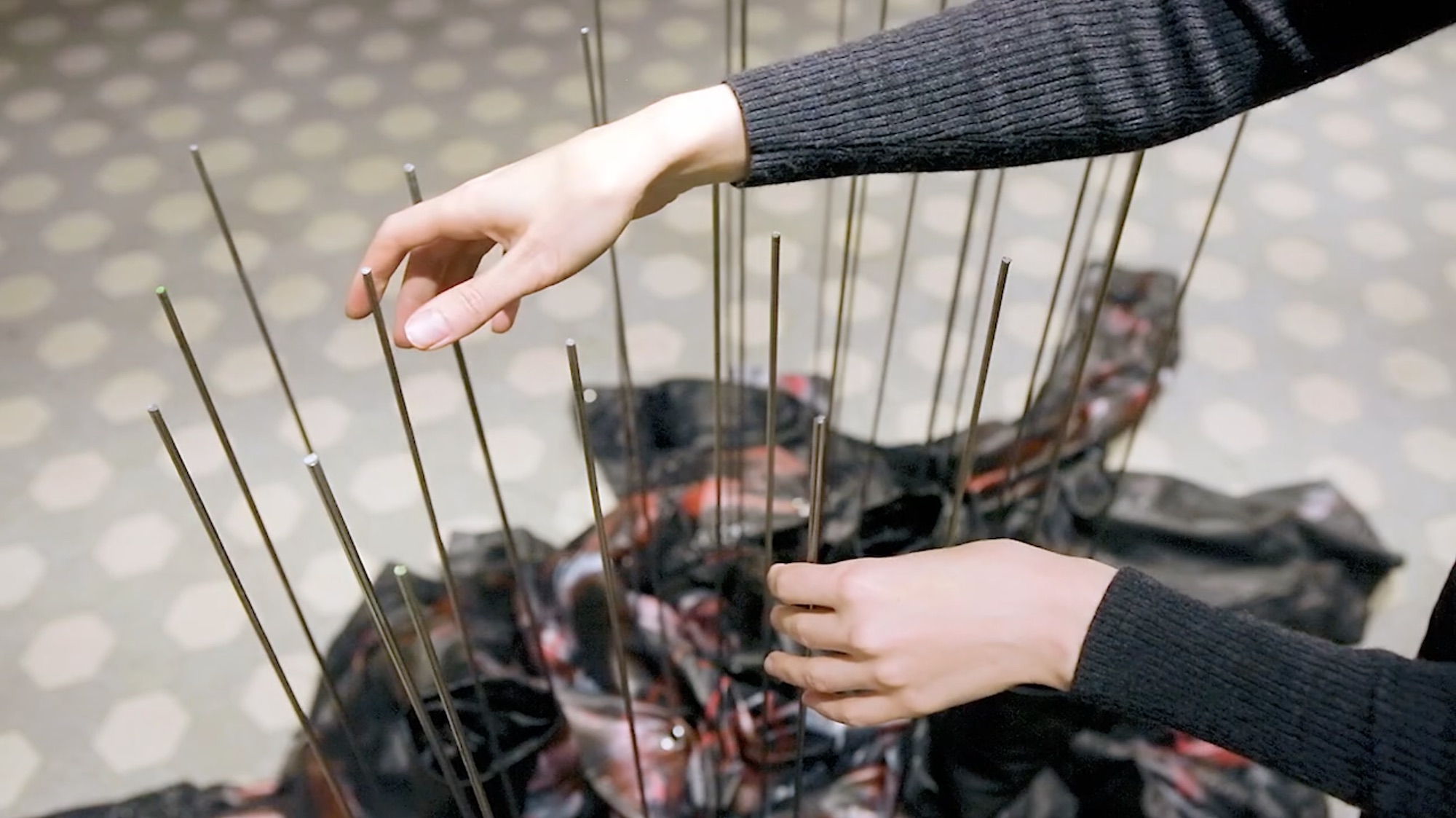
Using the metal parts as touchpoints to control the sound.
Sound synthesis
The two hanging installations decorated with metal studs use slightly altered versions of the same program, consisting of parallel chains of filtered noise and AM synthesis. The sharp and atonal noise in these pieces starts abruptly. Every touch provokes a new sound, varying from piercing noise to hisses, rumbles and crackles, reminding of mechanical malfunctions or natural sounds of thunder or storm. In these two works, the sound begins intimate and dry, but along every touch, reverb increases and the individual sounds start to blend into each other, resulting in a chaotic wall of noise.
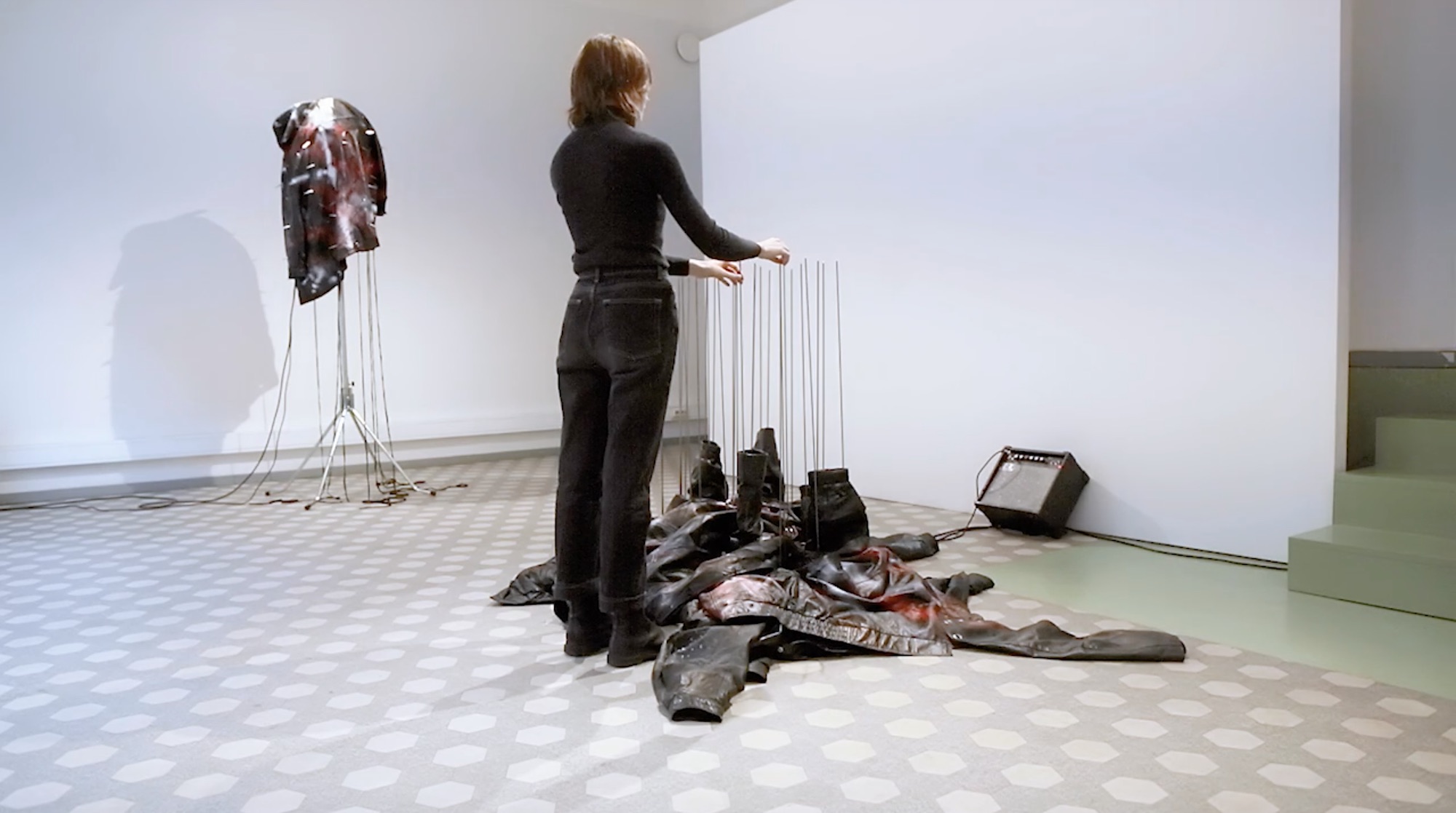
Still from the video showing how two of the installations were installed during the exhibition.
The sound of the third installation differs from the two others. In this patch, simple detuned oscillators are played through multiple delay loops, several instances of reverb patches and stacked distortion. Instead of sudden sonic outbursts, the sounds emerge slowly and form chords that vary from slightly dissonant to completely cacophonous. The sound is first clean and beautiful, but it soon grows into heavy distortion and drenches into atmospheric reverb and echo. The notes turn into shrill feedback overtones from time to time, which intensify as long as the metal rods are touched. Next to each of the installations, a small guitar amplifier stood facing the participant and reproduced the sound.
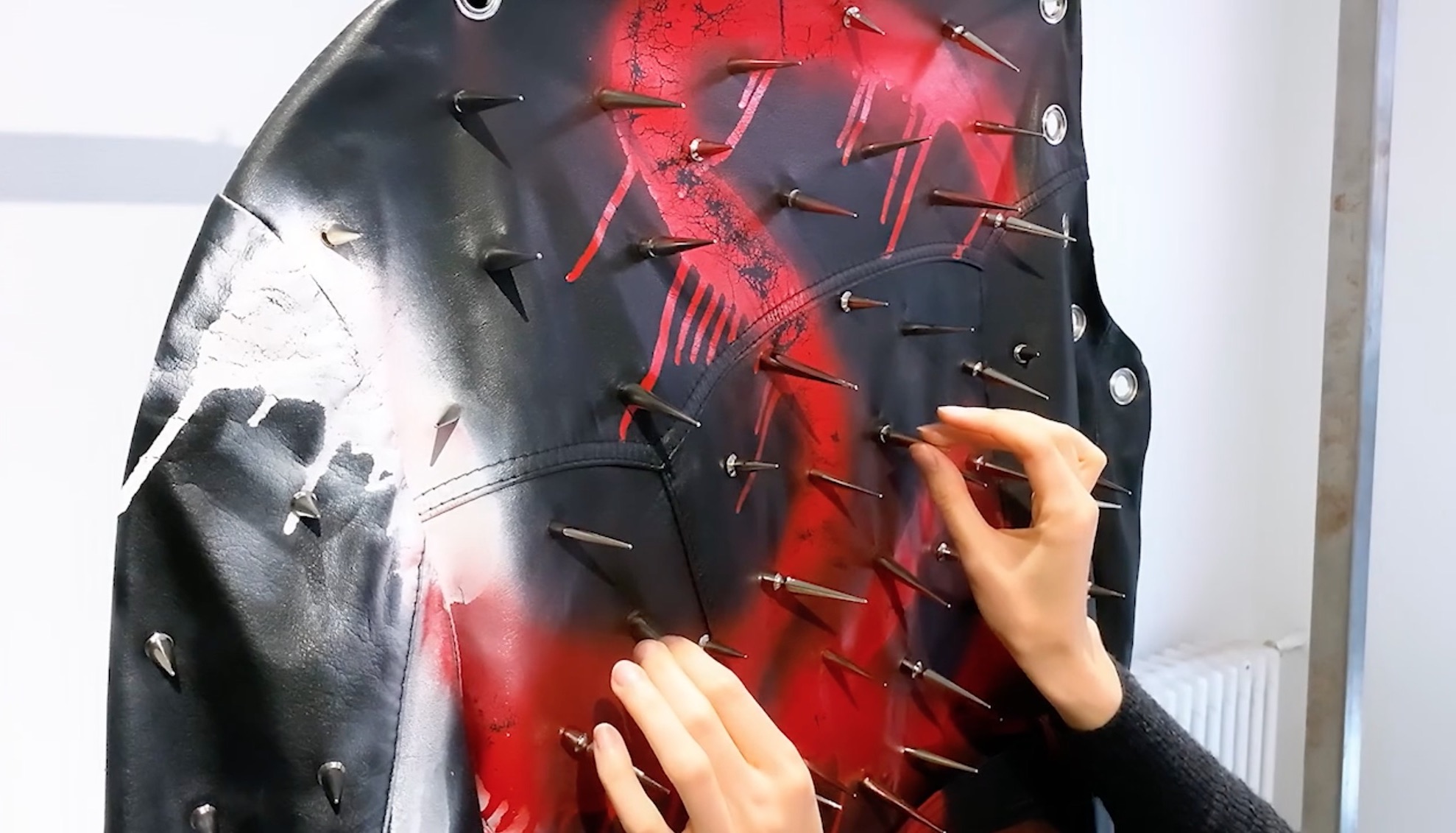
Using the metal parts as touchpoints to control the sound.
Exhibiting during a pandemic
While Covid-19 caused some restrictions, the exhibition was popular. Based on the audience feedback, most of the participants, who considered noise initially disturbing, found the sounds of the installations exciting. Even those who were not precisely noise music fans still spent a long time interacting with the works exploring their sounds. Dissonance showed that interaction does indeed affect how noise is perceived, making it meaningful and empowering.
About Antton Nuotio
Antton Nuotio is an installation artist based in Helsinki, Finland. He is currently finishing his master’s thesis with a focus on interaction with sound at Aalto University. He also performs and produces experimental electronic music under the moniker 111X.


